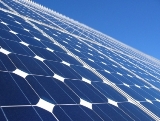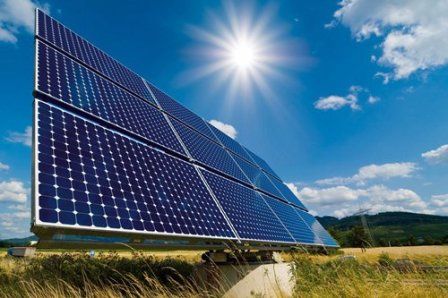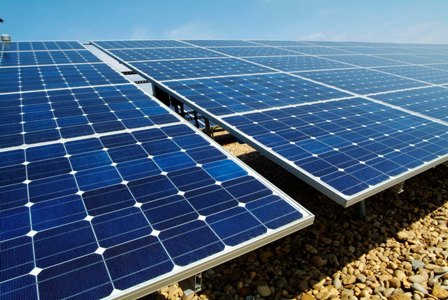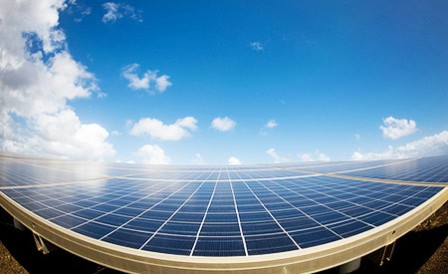Development of solar energy in the world
 Solar energy is used as a source of both electrical and thermal energy. It is environmentally friendly and no harmful emissions are generated during its conversion. This relatively new way of generating electricity developed rapidly in the mid-2000s, when EU countries began to implement policies to reduce dependence on hydrocarbons for electricity generation. Another goal was to reduce greenhouse gas emissions. During these years, the cost of manufacturing solar panels began to decrease and their efficiency began to increase.
Solar energy is used as a source of both electrical and thermal energy. It is environmentally friendly and no harmful emissions are generated during its conversion. This relatively new way of generating electricity developed rapidly in the mid-2000s, when EU countries began to implement policies to reduce dependence on hydrocarbons for electricity generation. Another goal was to reduce greenhouse gas emissions. During these years, the cost of manufacturing solar panels began to decrease and their efficiency began to increase.
The most favorable in terms of the length of daylight hours and the flow of sunlight throughout the year are tropical and subtropical climate zones. In temperate latitudes, the summer season is the most favorable, and as for the equatorial zone, cloudiness in the middle of the day is a negative factor for it.
Converting solar energy into electricity can be carried out through an intermediate thermal process or directly — through photovoltaic converters… Photovoltaic stations supply electricity directly to the grid or serve as a source of autonomous power for the user. Solar thermal plants are mainly used to obtain thermal energy by heating various heat carriers, such as water and air.

As of 2011, all solar power plants in the world produced 61.2 billion kilowatt-hours of electricity, corresponding to 0.28% of the world's total electricity generation. This volume is comparable to half the rate of electricity production in hydroelectric power plants in Russia. Most of the world's PV capacity is concentrated in a small number of countries: in 2012, 7 leading countries had 80% of the total capacity. The industry is developing fastest in Europe, where 68% of the world's installed capacity is concentrated. In first place is Germany, which (in 2012) accounts for about 33% of global capacity, followed by Italy, Spain and France.
In 2012, the installed capacity of solar PV plants worldwide amounted to 100.1 GW, which is less than 2% of the total of the global electricity industry. In the period from 2007 to 2012, this volume increased 10 times.

In China, the US and Japan, solar power capacity was deployed at 7-10 GW. In the last few years, solar energy has developed particularly rapidly in China, where the total capacity of photovoltaic plants in the country has increased 10 times in 2 years — from 0.8 GW in 2010 to 8.3 GW in 2012. Now Japan and China account for 50% of the global solar market. China's intention is to obtain 35 GW of electricity from solar installations in 2015.This is due to the ever-increasing demand for energy, as well as the need to fight for a cleaner environment that suffers from the burning of fossil fuels.
Japan's total solar power plant capacity will reach 100 GW by 2030, according to forecasts by the Japan Photovoltaic Association.
In the medium term, India plans to increase the capacity of solar installations by 10 times, that is, from 2 GW to 20 GW. The price of solar energy in India has already reached the level of $100 per 1 megawatt, which is comparable to the energy obtained in the country from imported coal or gas.
Only 30 percent of sub-Saharan Africa has access to energy source… Autonomous solar installations and micro-grids are being developed there. Africa, as a region with a powerful mining industry, thus expects to get an alternative to diesel power plants, as well as a reliable backup source for unreliable power grids.

In Russia, the period of formation of solar energy is now underway. The first photovoltaic station with a capacity of 100 kW, located on the territory of the Belgorod region, was launched in 2010. Solar polycrystalline panels for it were purchased at the metal-ceramic plant in Ryazan. In the Altai Republic, construction of a 5MW solar power plant began in 2014. Other possible projects in this area are being considered, including in the Primorsky Krai and Stavropol Krai, as well as in the Chelyabinsk Region.
As for solar thermal energy, according to the 21st Century Renewable Energy Policy Network, in 2012 its global installed capacity was 255 GW. Most of this heating capacity is located in China.In the structure of such capacities, the main role is played by stations aimed directly at heating water and air.
